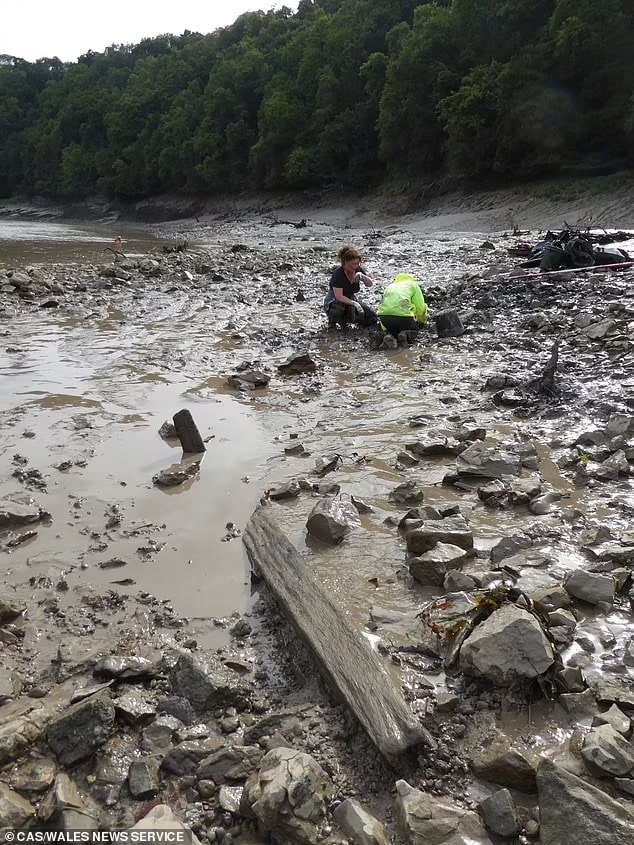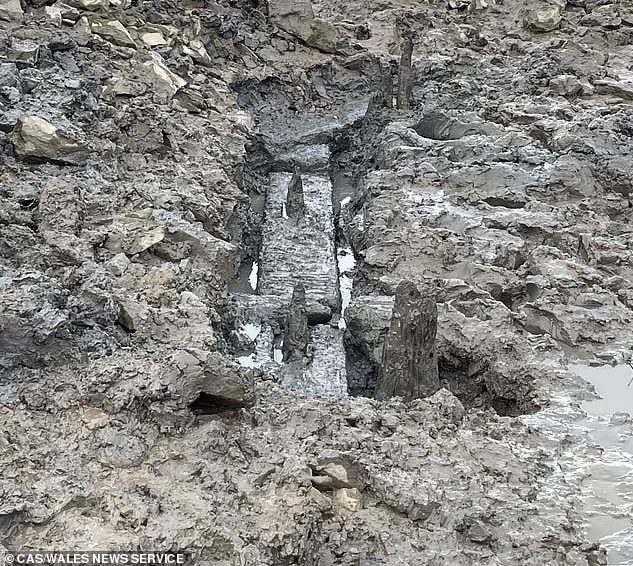Archaeologists, working in the shadow of the imposing Chepstow Castle, stumbled upon evidence not only of Roman and Anglo-Saxon fortifications, but also of an ancient wooden bridge – a vital artery connecting the two regions long before the formation of modern nations.
This bridge, believed to be Roman-built and dating back an estimated 2,000 years, lay hidden for centuries beneath layers of mud on the banks of the River Wye. The fortunate unearthing occurred during a rare “extreme low tide event,” presenting a fleeting window of opportunity for archaeologists.
“The team were able to locate upright timbers in a tidal pool on the location of the Roman crossing,” explained Simon Maddison of the Chepstow Archaeological Society (CAS). While the exact age of the structure awaits confirmation through techniques like dendrochronology (tree-ring dating) and radiocarbon dating, the initial discovery holds immense significance.

The bridge served as a crucial link between what would become Wales and England. It facilitated a route stretching from a point roughly half a mile upstream of Chepstow to the village of Tutshill in Gloucestershire. This vital connection predates modern transportation networks by centuries, highlighting the importance of this ancient crossing in fostering trade and communication.
The unearthing of the bridge wasn’t solely the result of meticulous planning. A stroke of serendipity played a vital role. Members of the Severn Area Rescue Association (SARA) assisted the CAS team during the excavation, which was made possible by the fortuitous two-hour window of the extreme low tide.

“Due to the tidal event, these ‘upright timbers’ were located in a tidal pool just off the riverbed,” elaborated Maddison. “Excavating around these we were able to expose very substantial timbers and beautiful joints that are probably part of an original pier and cutwater.”
This discovery isn’t entirely unprecedented. Historical records hint at the bridge’s existence. Dr. Orville Owen partially excavated the bridge in 1911, and it was even marked on an old Ordnance Survey map. However, following these initial encounters, the bridge remained submerged in the mud for over a century.
The recent unearthing of the Chepstow bridge promises to rewrite the narrative of the town’s history. It serves as a tangible reminder of the deep-rooted connections between the regions that would become Wales and England, fostering a sense of shared history that transcends national borders. Further analysis of the bridge’s structure and dating will undoubtedly provide even more insights into this fascinating archaeological find.
